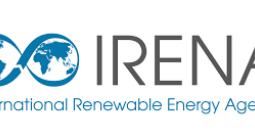EIA: U.S. Renewable Electricity Generation Has Doubled In 10 Years.

Renewable generation provided a new record of 742 million MWh of electricity in 2018, which is nearly double the 382 million MWh produced in 2008, according to a new report from the U.S. Energy Information Administration (EIA). EIA points out that renewables provided 17.6% of electricity generation in the U.S. in 2018.
Nearly 90% of the increase in U.S. renewable electricity between 2008 and 2018 came from wind and solar generation, according to the agency. Wind generation rose from 55 million MWh in 2008 to 275 million MWh in 2018 (6.5% of total electricity generation), which was exceeded only by conventional hydroelectric at 292 million MWh (6.9% of total generation).
EIA adds that U.S. solar generation increased from 2 million MWh in 2008 to 96 million MWh in 2018. Solar generation, which accounted for 2.3% of electricity generation in 2018, is generally categorized as small-scale (customer-sited or rooftop) solar installations or utility-scale installations. In 2018, 69% of solar generation – or 67 million MWh – was utility-scale solar.
EIA explains that increases in U.S. wind and solar generation are driven largely by capacity additions. In 2008, the U.S. had 25 GW of wind-generating capacity; by the end of 2018, 94 GW of wind-generating capacity was operating on the electric grid. Almost all of this capacity is onshore, with the exception of the 30 MW Block Island Wind Farm, located offshore Rhode Island.
Similarly, installed solar capacity grew from an estimated less than 1 GW in 2008 to 51 GW in 2018. In 2018, 1.8 GW of this solar capacity was solar thermal, 30 GW was utility-scale solar PV and the remaining 20 GW was small-scale solar PV.
EIA says the growth in renewable technologies in the U.S., particularly in wind and solar, has been driven by federal and state policies and declining costs. Federal policies such as the American Reinvestment and Recovery Act of 2009, as well as the production tax credit and investment tax credit for wind and solar, have spurred project development, in addition to state-level policies, such as renewable portfolio standards, which require a certain share of electricity to come from renewable sources over time.
Further, as more wind and solar projects have come online, economies of scale have led to more efficient project development and financing mechanisms – which has led to continued cost declines, the agency explains.
Conventional hydroelectric capacity has remained relatively unchanged in the U.S., increasing by 2% since 2008. Changes in hydroelectric generation year-over-year typically reflect changes in precipitation and drought conditions, the agency says. Between 2008 and 2018, annual U.S. hydroelectric generation was as low as 249 million MWh and as high as 319 million MWh, with hydroelectric generation in 2018 totaling 292 million MWh. Generation from other renewable resources, including biomass and geothermal, increased from 70 million MWh to 79 million MWh in the U.S. between 2008 and 2018, and it collectively represented 1.9% of total generation in 2018.
19 March 2019







